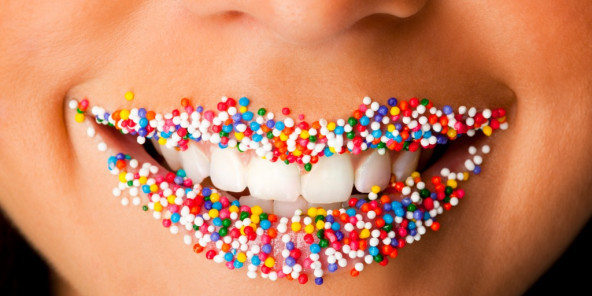Can Sugar Affect Your Gums? Everything You Need to Know This (Extra) Silly Season
So, the silly season is almost here and after the year (or two) that has been, we are here to help you navigate the months ahead in safety when it comes to your oral health.
Why is it an appropriate time to consider your oral health? Well, aside from the months of lockdown food overload, the silly season is often a time that is characterised by an increase in sugar and sweets. We want you to be armed with the best advice on how sugar can affect the health of your gums and why it’s important to approach your food choices in an informed way.
The case of added sugar and periodontal disease in young adults
A recent study has found a strong link between sugar intake and periodontal disease in young adults.
According to the Centers for Disease Control and Prevention, periodontal disease is: “The result of infections and inflammation of the gums and bone that surround and support the teeth.” In the early stages, it can present as gingivitis and you may not think much of it. However, if this early warning sign is not taken seriously, chances of tooth loss and far greater disease increases.
Add a high rate of sugar in your diet and, independent of traditional risk factors, your risk of oral disease is heightened.
What is it about sugar that feeds gum disease?
Whilst we all know and understand that sugar is not the best substance for our teeth (or gums), and we are all too aware of the common consequences when we consume too much, i.e. cavities. But, did you know that it’s not even the sugar itself that causes the harm?
What is most detrimental to your oral health is the harmful bacteria in your mouth that choose to feed on sugars and starch.
The sugar you eat affects the PH balance of your mouth. Your natural saliva is acidic, and when combined with regular tooth brushing it can maintain a low PH level, which creates an environment for optimal tooth and gum health.
However, when you consume sugar, your saliva interacts and begins to break it down, and as the naturally occurring bacteria in your saliva mix with the sugar, they create acid, which drives up the PH.
This imbalance can lead to a more acidic environment in your mouth. The acid levels can remain elevated for twenty minutes or more, and during this time that acid begins to eat into the enamel of your teeth, creating dental caries, also known as cavities.
What are the types of sugar you should be most concerned with?
When assessing your sugar intake, it’s important to understand the different types of sugars and where they might be hiding in your diet.
Liquid forms of sugar, such as those found in sodas and juices are able to get into every opening, crevice, and crack of your mouth. Even if you brush your teeth twice a day and floss regularly, reaching all of the places where bacteria can reside after consuming one of these drinks is difficult. It is in these hard-to-reach areas that the bacteria will thrive, leading to cavities under the gums, between the teeth and in other areas that are difficult to reach. Eventually, gingivitis, which is the first stage of gum disease, may develop.
Non-liquid forms of sugar leave large amounts of residue on the teeth. Since the saliva is unable to wash large pieces of food away, you are more susceptible to tooth decay and gum disease. This is especially true in relation to processed sugars that are highly concentrated.
What are the most common high sugar silly season treats?
Stuffing
A surprisingly sugary food is shop-bought stuffing, which can contain 4.1g of sugar per slice (and we can never stop at one!).
Christmas Pudding
Ok, so you were probably aware that Christmas pudding was not a ‘low in sugar’ option, but amazingly, a portion of the festive dessert can have 21g of sugar– that’s over five spoonfuls of sugar and nearly your entire daily intake.
Mulled Wine
Ever wondered why mulled wine tastes so good? It might have something to do with the whopping three and a half spoonfuls of sugar per glass – over a third of your recommended daily intake.
It seems there might be a trend happening here… Chances are, the better it tastes, the more sugars involved. But not all is lost. You can still enjoy yourself, so long as you’re armed with the facts. And, everything in moderation, right?
How can you enjoy your sugars safely?
Dental experts recommend that you avoid sugary drinks and foods whenever possible and be sure to always brush your teeth as soon as possible after eating or drinking, especially when those foods or beverages are sweetened with sugar, corn syrup, or other forms of sugar.
And as always, keep your smile healthy and strong by brushing and flossing every day and visiting your dentist at least twice a year.
Our professional, friendly staff will make your visit as comfortable and pleasant as possible in our relaxed and modern surroundings. Contact us today to book your appointment.
